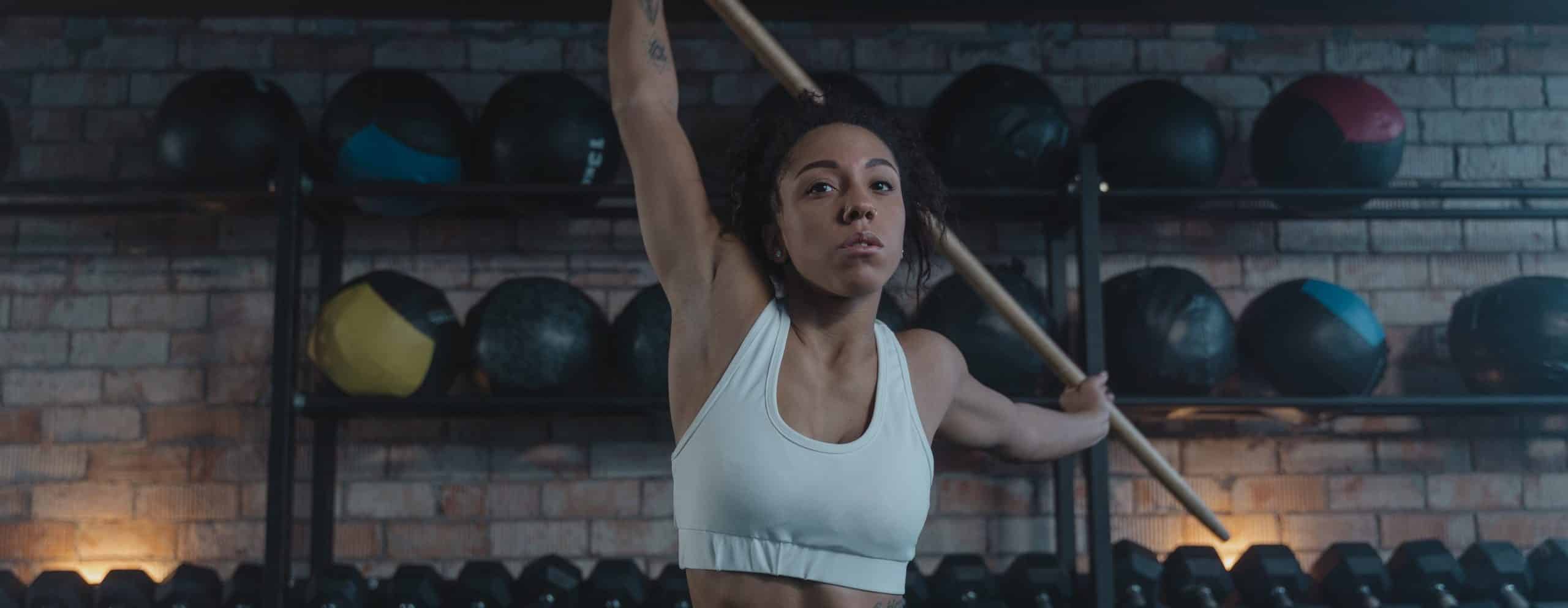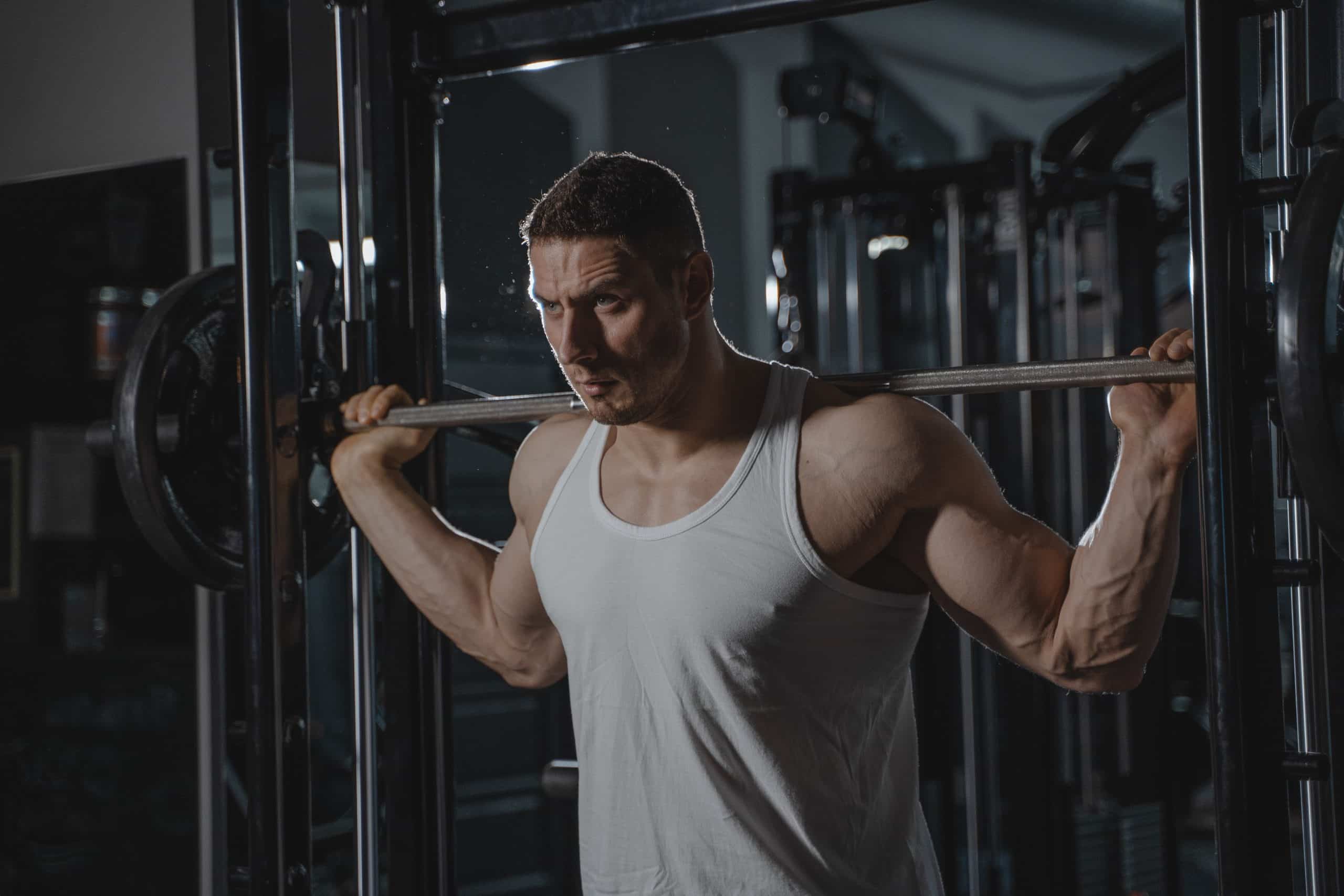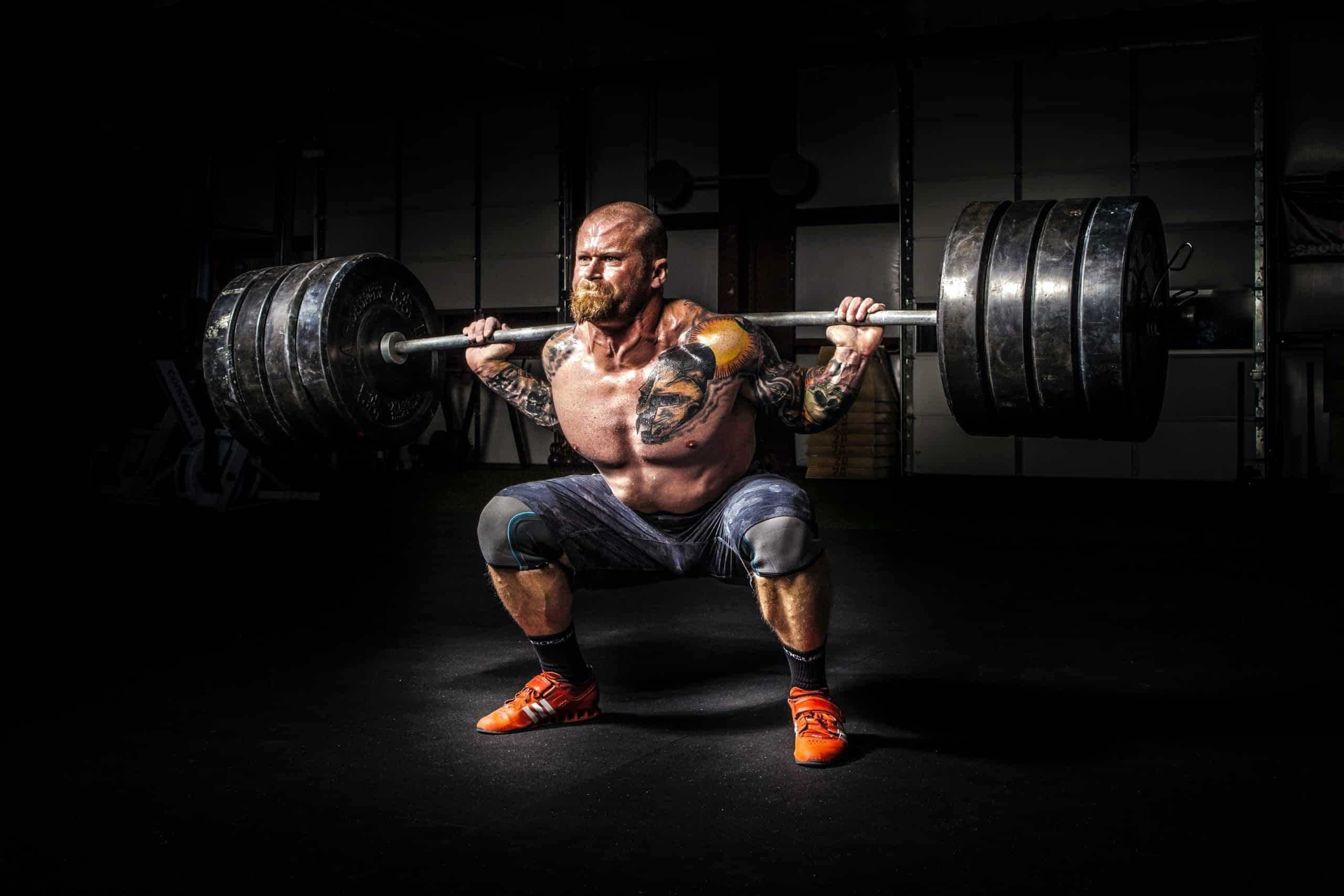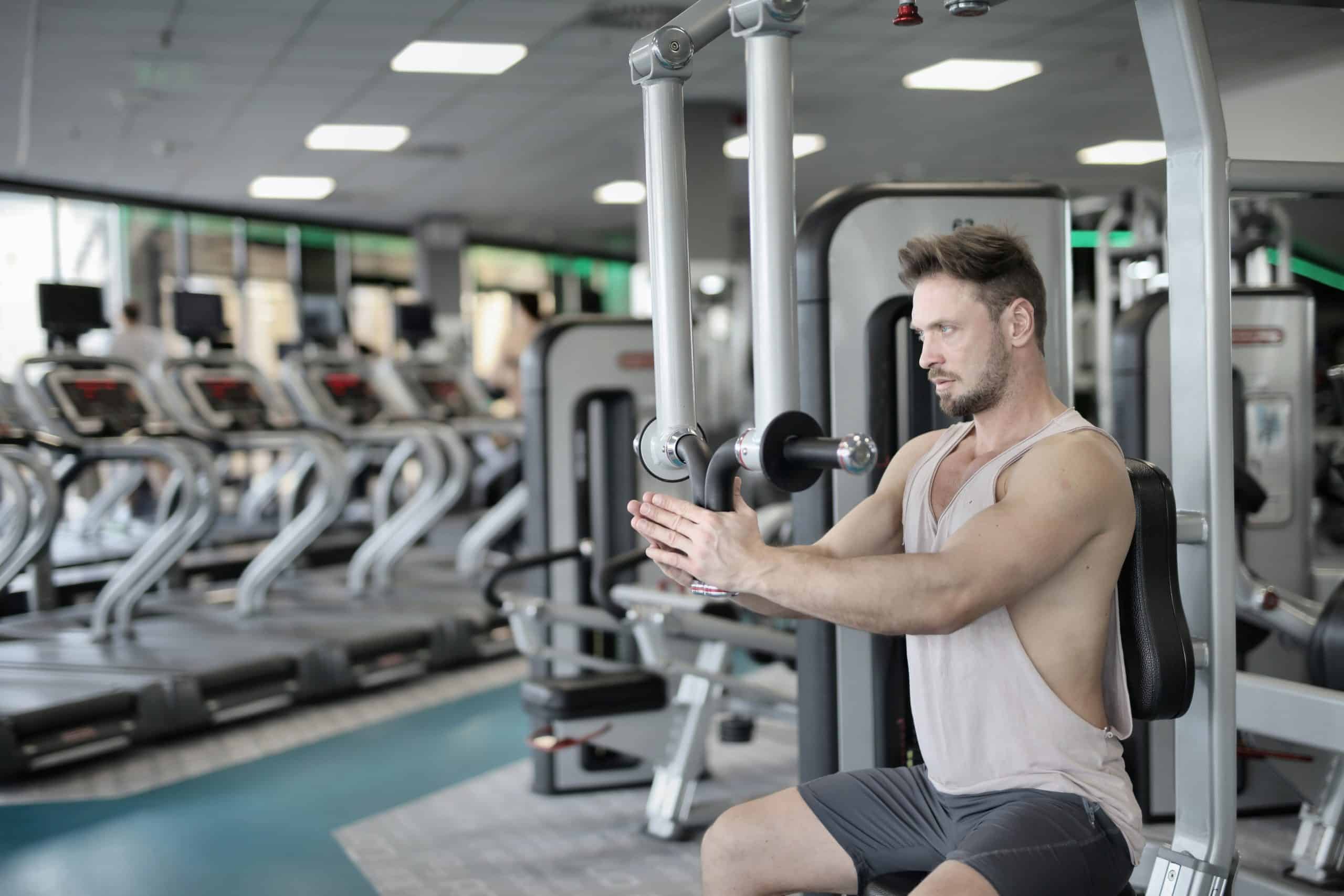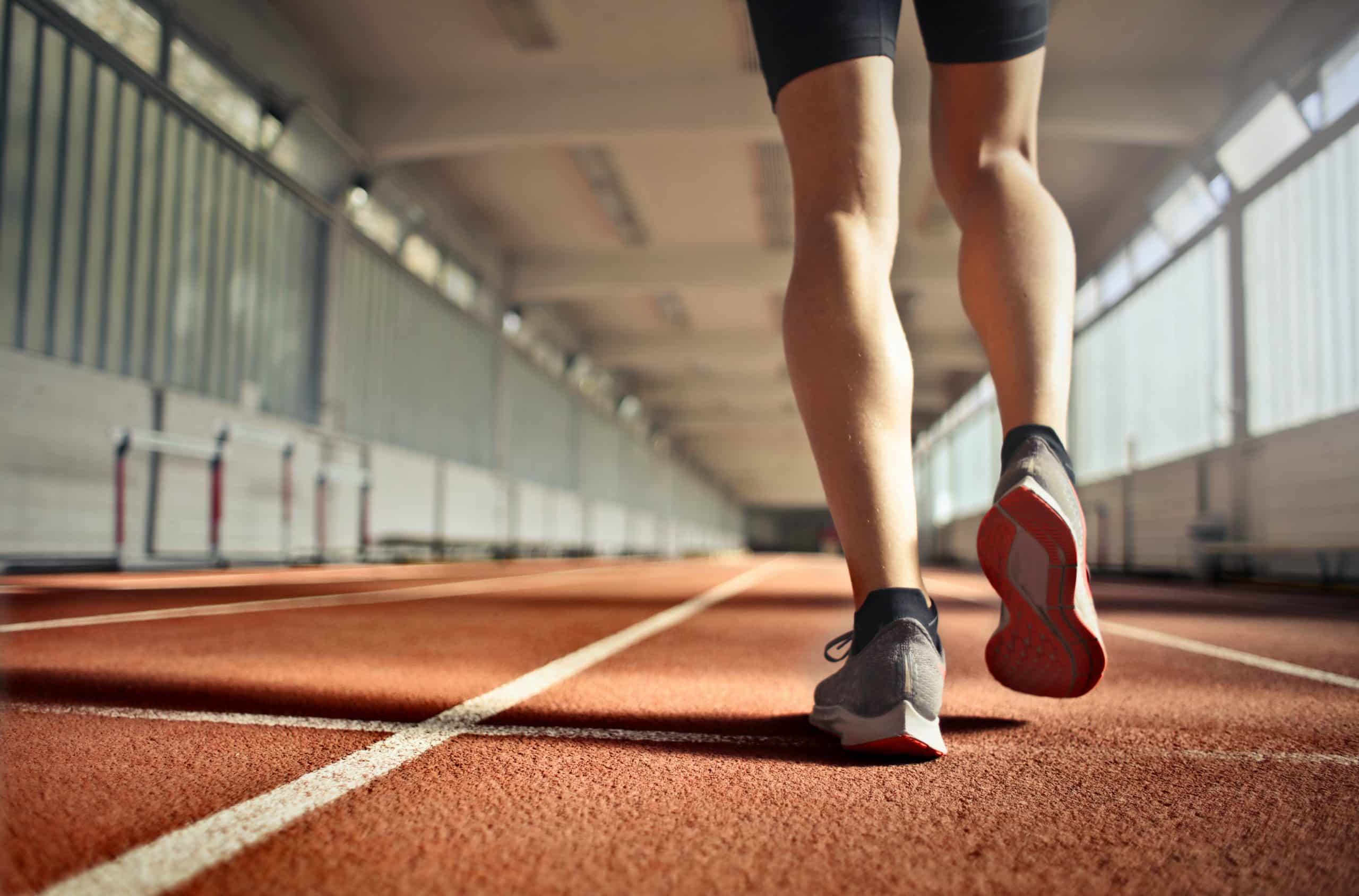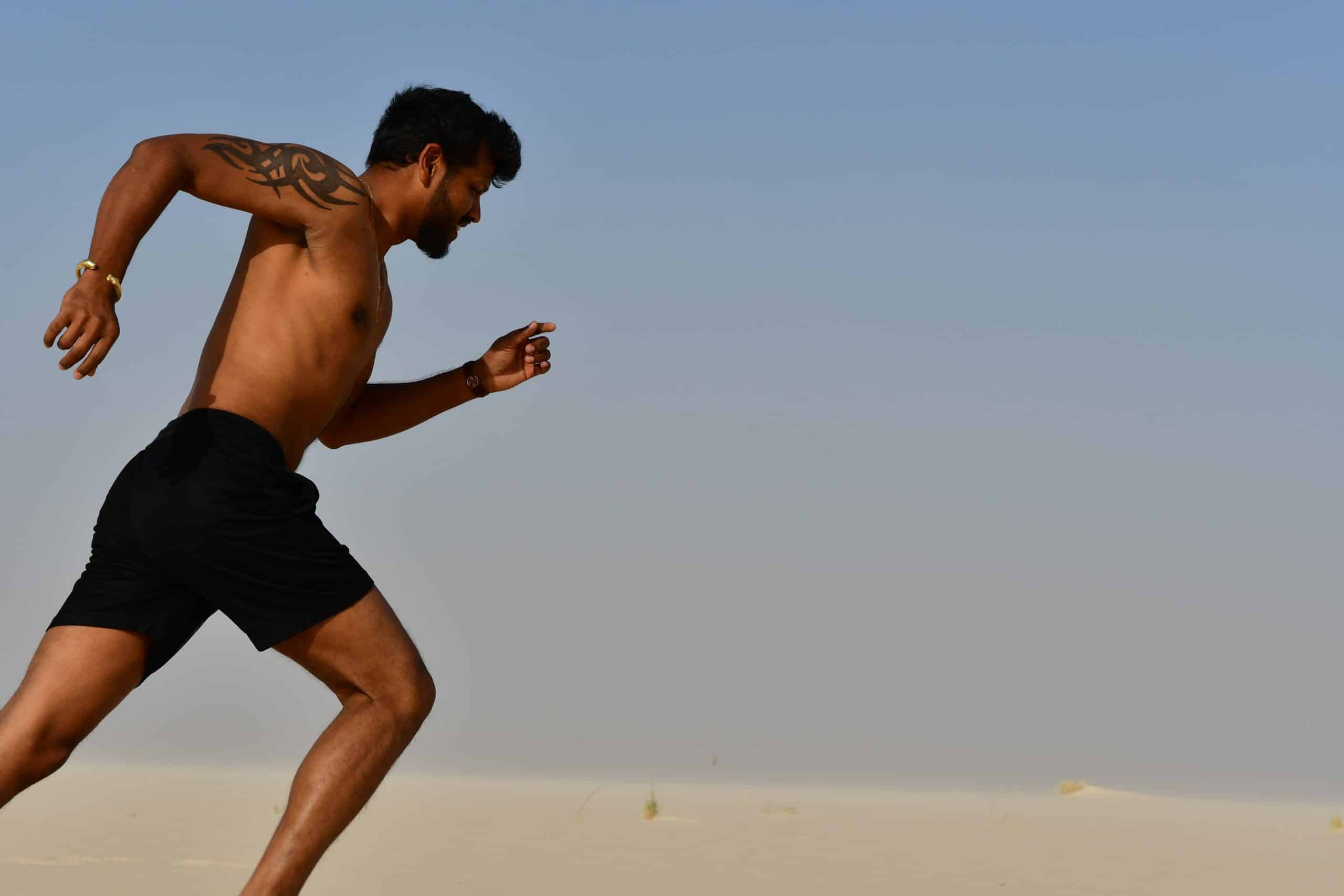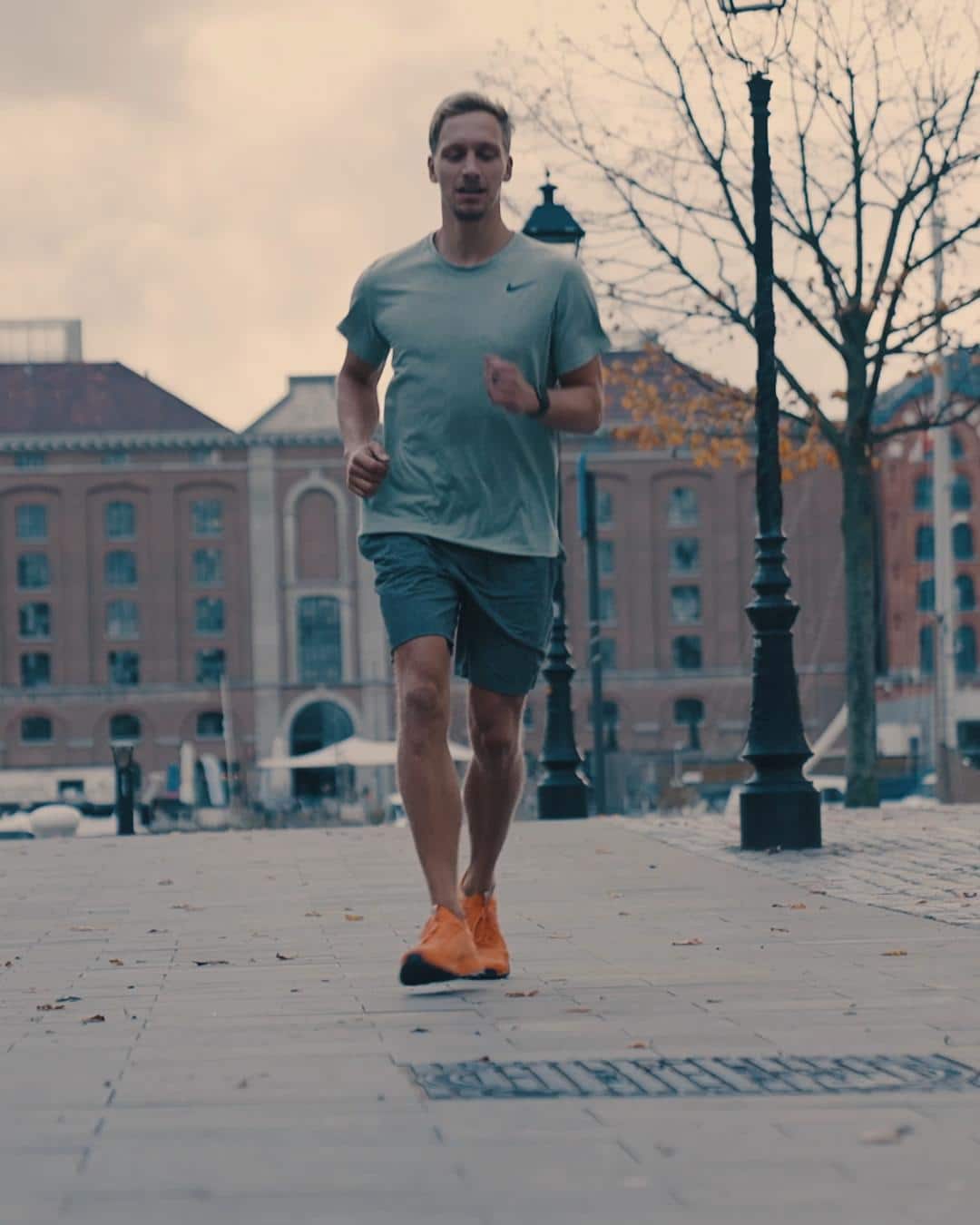The Benefits of Functional Fitness: Why You Should Incorporate It into Your Workouts
In recent years, functional fitness has gained popularity among fitness enthusiasts and athletes alike. This approach to training emphasizes movements that mimic everyday activities and improve overall functionality. But what exactly are the benefits of functional fitness, and why should you incorporate it into your workouts?
-
Increased overall strength and flexibility
-
Improved balance and coordination
-
Reduced risk of injury
-
Enhanced sports performance
-
Greater ease in performing daily activities
-
Time-efficient workouts
Functional fitness offers a wide range of benefits for individuals at any fitness level. By incorporating functional movements into your workouts, you can improve overall strength and flexibility, reduce the risk of injury, and enhance your performance in sports and daily activities. So next time you hit the gym, try adding some functional exercises to your routine and experience the benefits for yourself.
Increased Overall Strength and Flexibility
Functional fitness is a term that's been gaining popularity in recent years, and for good reason. It focuses on building strength, mobility, and flexibility in movements that we use in our everyday lives, such as squatting, bending, pushing, pulling, and twisting.
Unlike traditional gym workouts that isolate individual muscle groups, functional fitness movements train multiple muscle groups at once, and often involve the use of free weights, resistance bands, and bodyweight exercises. This type of training not only helps to build strength and flexibility, but also improves balance, coordination, and stability.
One of the biggest benefits of functional fitness is its transferability to real-life activities. Whether you're carrying groceries, playing with your kids, or doing yard work, functional fitness movements mimic the actions we perform in our daily lives, making these activities easier and less taxing on our bodies.
Functional fitness also helps to prevent injuries, particularly in older adults. By building strength and flexibility in the muscles and joints used in everyday movements, functional fitness can reduce the risk of falls and other injuries.
Here are some examples of functional fitness exercises:
- Squats: This exercise targets the muscles in the legs and glutes, which are essential for everyday movements like standing up from a chair or lifting a heavy object.
- Push-ups: Push-ups work the chest, shoulders, and triceps, which are important for pushing movements like opening a door or carrying a bag.
- Lunges: Lunges strengthen the legs and hips, which are involved in walking and stair climbing.
- Rows: Rows target the muscles in the upper back, which are important for good posture and lifting objects off the ground.
- Planks: Planks strengthen the core muscles, which are essential for balance and stability in everyday movements.
So, if you're looking to increase your overall strength and flexibility, consider incorporating functional fitness exercises into your workout routine. Not only will it improve your fitness, but it will also make everyday activities easier and more enjoyable. Watch this Follow Along Workout to include all these aspects:
Improved balance and coordination
Balance and coordination are crucial components of overall fitness, yet often overlooked in traditional strength training programs. Incorporating functional fitness exercises into your workout routine can help improve your balance and coordination, which can have a significant impact on your performance in everyday activities and sports. In this post, we'll explore the benefits of functional fitness for balance and coordination, and provide some examples of exercises you can incorporate into your routine.
Benefits of Functional Fitness for Balance and Coordination:
- Improved Stability: Functional fitness exercises focus on training your body to move in a natural, functional way. This type of training can improve your overall stability, making you less prone to falls and injuries. It can also help improve your posture and alignment, which can reduce the risk of back pain.
- Increased Proprioception: Proprioception is your body's ability to sense its position in space. Functional fitness exercises require you to use multiple muscle groups at once, which can improve your proprioception and make you more aware of your body's movements.
- Better Coordination: Functional fitness exercises can help improve your coordination by requiring you to use multiple muscle groups and perform complex movements. This can translate to improved performance in sports that require agility and quick reactions.
Examples of Exercises:
- Single Leg Balance: Stand on one leg with your knee slightly bent and your foot flat on the ground. Hold this position for 30 seconds, then switch legs. To make this exercise more challenging, close your eyes or stand on a cushioned surface.
- Lateral Bounds: Stand with your feet hip-width apart and jump laterally to the side, landing on one foot. Immediately jump back to the starting position and repeat on the other side. This exercise can help improve your lateral stability and coordination.
- Medicine Ball Throws: Stand with your feet shoulder-width apart and hold a medicine ball at chest height. Twist your torso and throw the ball against a wall, catching it as it bounces back. This exercise can improve your coordination and balance while also working your core and upper body.
Conclusion: Incorporating functional fitness exercises into your workout routine can help improve your balance and coordination, which can have a significant impact on your overall fitness and performance in everyday activities and sports. Try incorporating some of these exercises into your routine and see how it can benefit you!
Reduced risk of injury
Unlike traditional gym routines that often focus on isolated muscle groups, functional fitness workouts target multiple muscle groups at once and help develop a strong foundation of strength, stability, balance, and flexibility. In this post, we will discuss how functional fitness can help reduce the risk of injury.
Functional fitness workouts are designed to improve the overall movement patterns of the body, making it more efficient and less prone to injury. By focusing on exercises that target multiple muscle groups and mimic real-life movements, functional fitness workouts help develop a strong core, improve posture, and promote better balance and coordination.
One of the most significant benefits of functional fitness is that it helps improve the body's ability to move in multiple planes of motion. Many traditional gym routines tend to focus on exercises that are performed in a single plane of motion, which can lead to muscle imbalances and increase the risk of injury. Functional fitness workouts, on the other hand, incorporate exercises that challenge the body to move in different planes of motion, such as twisting, bending, reaching, and rotating, leading to a well-rounded fitness level and a reduced risk of injury.
Another way functional fitness can reduce the risk of injury is by improving muscle imbalances. Muscle imbalances occur when one muscle group is stronger than its opposing muscle group, leading to improper movement patterns and increasing the risk of injury. Functional fitness workouts target multiple muscle groups at once, ensuring that all muscle groups are worked equally and reducing the risk of muscle imbalances.
Finally, functional fitness helps improve flexibility, mobility, and stability, all of which contribute to reducing the risk of injury. Exercises that focus on mobility and flexibility, such as stretching, foam rolling, and yoga, help improve joint mobility and reduce the risk of injury. Additionally, exercises that target stability, such as balance training, help improve overall balance and coordination, leading to a reduced risk of falls and other injuries.
The definition of a functional exercise is the Copenhagen Plank where we ask for co-contraction of the adductors, glutes and abs to decrease the risk of injury:
Enhanced Sports Performance
Functional fitness is a type of exercise that focuses on improving overall body movements, making everyday activities easier, and enhancing sports performance. When it comes to sports performance, functional fitness can be a game-changer.
By engaging in functional fitness exercises, athletes can improve their agility, power, speed, and endurance. Functional fitness exercises mimic the movements required for various sports, making it easier for athletes to perform at their best. Additionally, functional fitness helps prevent injuries, allowing athletes to stay on top of their game for longer.
For example, let's consider a basketball player. Basketball requires a lot of lateral movements, jumping, and quick changes in direction. By incorporating exercises like lateral lunges, box jumps, and agility drills into their functional fitness routine, a basketball player can improve their lateral speed, vertical jump, and change of direction. This leads to improved on-court performance and reduced risk of injury.
Another example is a football player. Football requires a lot of explosive movements, like sprinting, tackling, and jumping. By incorporating exercises like squats, deadlifts, and plyometric jumps into their functional fitness routine, a football player can improve their power, speed, and explosiveness on the field. This translates to improved performance and a reduced risk of injury.
Overall, functional fitness is a great way for athletes to enhance their sports performance, reduce the risk of injury, and stay on top of their game. By incorporating exercises that mimic the movements required for their sport, athletes can see real improvements in their performance on the field or court.
Here's a video we did specifically for explosive sports and their athletes' knee troubles:
Greater Ease in Performing Daily Activities
As we age, it becomes increasingly important to maintain our functional fitness. This type of fitness is all about training our bodies to move and function in everyday life, rather than just focusing on aesthetics or building muscle mass. Functional fitness can help us with everything from carrying groceries to climbing stairs to playing with our grandkids. And for older adults, it can make a huge difference in maintaining independence and quality of life.
One of the key benefits of functional fitness is that it can make everyday tasks feel easier and more manageable. For example, if you have good balance and coordination, you're less likely to stumble or fall while walking on uneven terrain. If you have strong core muscles, you'll find it easier to get up from a chair or bed. And if you have good flexibility and range of motion, you'll be able to reach for items on high shelves or bend down to tie your shoes without discomfort.
Functional fitness can be especially important for older adults, who may experience age-related declines in strength, flexibility, and balance. By incorporating exercises that mimic daily activities, such as squats, lunges, and step-ups, functional fitness can help maintain or even improve these physical abilities. This can be especially beneficial for older adults who want to stay independent and live in their own homes for as long as possible.
But functional fitness isn't just for older adults. Anyone can benefit from training their bodies to move and function better in everyday life. Whether you're a busy parent who needs to carry kids and groceries, or an athlete looking to improve your performance on the field, functional fitness can help. Check out our warm-up which we use with Online Coaching clients:
Time Efficient Workouts
This is a highly effective way to improve your overall fitness and achieve your goals without having to spend hours on end at the gym. Here are just a few reasons why functional fitness is a time-efficient solution to your workout woes:
- Multi-joint movements: Functional fitness exercises often involve multiple joints and muscles working together, which means you can achieve a full-body workout in less time. This is because these exercises are more efficient at burning calories and building strength than isolation exercises.
- Increased intensity: Functional fitness workouts are typically higher intensity, meaning you can get a great workout in a shorter amount of time. This is because these exercises involve movements that require more effort and energy, such as squats, lunges, and push-ups.
- Adaptability: Functional fitness exercises can be adapted to your fitness level and goals. This means you can make the most of your time by performing exercises that challenge you without taking up too much time.
It's important to remember that workouts shouldn't be time-consuming.
In fact, it's better to have shorter, more intense workouts than long, drawn-out ones. This is especially important for older individuals, who may have a harder time finding the energy and motivation to work out for long periods of time. By incorporating functional fitness into your routine, you can improve your overall fitness and make the most of your time.
This is an example how only 10 minutes a day can reset your posture:
7 Ways to Maintain Your Strength and Conditioning While Traveling: Tips and Tricks for Fitness on the Go
As a fitness nut, you know the importance of maintaining your strength and conditioning routine. But what happens when you're on the road, traveling for work or pleasure? It can be tough to stick to your usual workout regimen when you're away from home, but don't worry - there are ways to stay on track. In this post, we'll share seven tips and tricks for maintaining your strength and conditioning while traveling.
Plan Ahead
- Plan Ahead: Before you even leave for your trip, take some time to plan out your workouts. Consider the facilities available at your destination and what equipment you might need. This way, you can pack accordingly and make sure you have everything you need to stay on track.
Example: Let's say you're headed to a hotel that has a gym. Check out their website to see what equipment they have available, and plan your workouts accordingly. If they have dumbbells, plan some strength training exercises. If they have a treadmill, plan some cardio.
If you don't know how to plan a cardio session: hit us up!
Bodyweight Exercises
- Bodyweight Exercises: One of the great things about bodyweight exercises is that you can do them anywhere, without any equipment. They're perfect for staying in shape while traveling, as you can do them in your hotel room or even outdoors.
Example: Push-ups, squats, lunges, and planks are all great bodyweight exercises that you can do anywhere. Watch and subscribe to our Youtube channel to get into the Seiza Flow!
HIIT Workouts
- HIIT Workouts: High-Intensity Interval Training (HIIT) is a great way to get a full-body workout in a short amount of time. It's perfect for travelers who are short on time but still want to get a good workout in.
Example: A simple HIIT workout might include jumping jacks, burpees, mountain climbers, and squat jumps.
Check out our Follow Along workout that'll make you sweat!
Resistance Bands
- Resistance Bands: Resistance bands are lightweight and portable, making them perfect for traveling. They can be used for a variety of exercises, including strength training, stretching, and mobility work.
Example: Pack a resistance band in your suitcase and use it for exercises like bicep curls, lateral raises, and band pull-aparts.
Buy a resistance band pack right here.
Use the follow along video down below to get your resistance band work in!
The Destination
- Explore Your Destination: One of the best ways to stay active while traveling is to explore your destination on foot. Walking, hiking, and biking are all great ways to get some exercise while also seeing the sights.
Example: If you're in a city, take a walking tour of the area. If you're in a more rural area, go for a hike or rent a bike and explore the countryside.
Online Coaching
- Online Coaching: Consider online coaching to stay on track with your fitness goals while traveling. With virtual coaching sessions and personalized workout plans, you can stay connected with your coach from anywhere in the world.
Get to talking with one of our coaches
Stay Hydrated
- Stay Hydrated: Finally, don't forget to stay hydrated while traveling. Proper hydration is essential for maintaining energy and endurance during workouts.
Example: Always carry a reusable water bottle with you and refill it throughout the day.
By following these seven tips and tricks, you can maintain your strength and conditioning routine while traveling. Remember, consistency is key when it comes to fitness, so don't let your travels derail your progress.
Mastering the Art of Online Coaching for Strength and Conditioning: Key Aspects to Ensure Client Success
Are you searching for a convenient and effective way to achieve your fitness goals? Online coaching for strength and conditioning may be just what you need. In today's fast-paced world, many people are turning to online coaching as a convenient and effective way to achieve their fitness goals, but if you're new to this type of coaching, you may be wondering if it's right for you. In this post, we'll explore the key aspects of online coaching for strength and conditioning, and how they can help you achieve your goals, no matter where you are in the world. Whether you're a seasoned athlete or just starting out on your fitness journey, this guide will provide you with the insights and information you need to make an informed decision about online coaching. Read on to discover the benefits of online coaching and why it may be the perfect solution to help you reach your fitness goals.
"Strength training isn't about being the strongest person in the gym; it's about being the strongest version of yourself outside of it. Regular strength training has been shown to improve longevity, bone density, and overall quality of life." - unknown.
Online coaching for strength and conditioning has become increasingly popular in recent years, and for good reason. With the convenience and flexibility of online coaching, clients can work with qualified trainers and coaches from anywhere in the world. However, to ensure client success, there are several key aspects of online coaching that must be mastered. In this post, we'll explore these seven elements and provide examples of how they can be applied to help a fictive client achieve their fitness goals. We used examples but changed the name of our clients to ensure their anonymity.
Goal Setting
One of the most important aspects of online coaching is goal setting. Before beginning a training program, a coach must work with their client to establish clear, specific, and measurable goals. For example, a client may want to lose 3 kilos in the next three months, or they may want to increase their squat max by 10 kilos in six months. By setting these goals, both the coach and the client have a clear target to work towards and can measure progress along the way.
Seiza Example: John is a 35-year-old man who wants to improve his overall fitness level. After discussing his goals with his coach, they establish that John's main objective is to lose 3 kilos of fat while gaining muscle mass. This was discussed with the Seiza coaches and the Nutritional Expert!
Click here to talk goals with one of our coaches.
Assessment and Intake
To create an effective training program, an online coach must first assess their client's current fitness level and limitations. This can be done through a combination of online questionnaires, video analysis, and other tools. Based on this assessment, the coach can develop a customized program that is tailored to the client's individual needs.
Seiza Example: Sarah is a 28-year-old woman who has never lifted weights before. We assessed her mobility and flexibility through video and determined that she needs to work on these areas before beginning any strength training.
Communication
Clear and consistent communication is key to successful online coaching. Coaches should provide timely and constructive feedback and be available to answer their client's questions and concerns. This communication can take place through a variety of channels, such as email, video calls, or messaging apps.
Seiza Example: Mattias is a busy professional who can only work out early in the morning before work. His coach communicates with him through a messaging app and provides feedback on his form and technique, ensuring that Mattias is on track with his program.
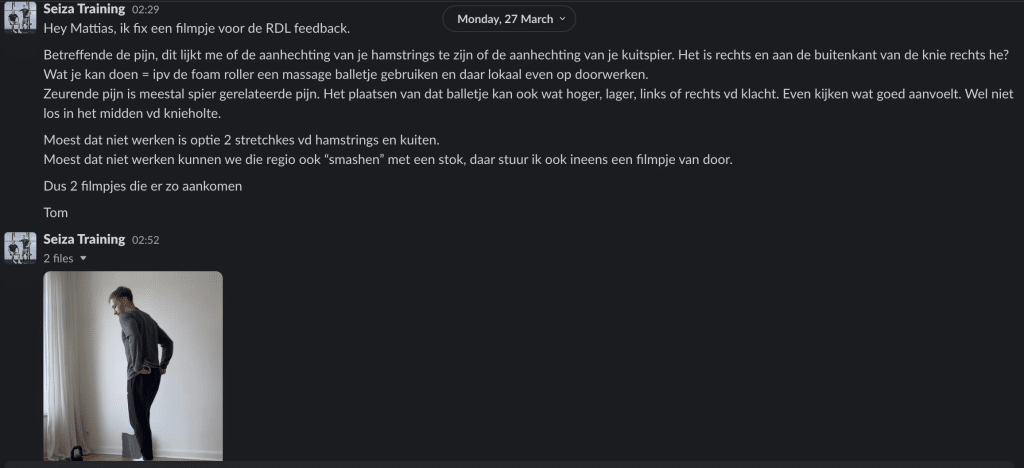
Personalization
Every client is different, and an effective online coach should tailor their training programs to their client's needs and preferences. This includes taking into account any injuries or limitations, as well as the client's fitness level and goals.
Seiza Example: Emily is a 45-year-old woman who has had knee surgery in the past. Her coach designs a program that takes into account her injury and focuses on exercises that are safe and effective for her.
Watch the video below where we go in-depth about breathing:
Program Design
An effective online coach will design a customized training program that is progressive, challenging, and aligned with their client's goals. This program should include a variety of exercises, including strength training, cardiovascular exercise, and mobility work.
Seiza Example: Mike is a 30-year-old man who wants to improve his overall fitness level and increase his endurance. His coach designs a program that includes a mix of strength training, HIIT, and steady-state cardio, as well as mobility work. His endurance program was created by a multiple Dutch national champion in Triathlon.
Watch the video below (in Dutch) where we explain how the program works!
Accountability
Regular check-ins and progress tracking are essential for keeping clients accountable and motivated. This can include weekly or monthly progress reports, as well as regular feedback on form and technique.
Seiza Example: Rachel is a 32-year-old woman who has a busy schedule and struggles with consistency. Her coach checks in with her regularly and provides her with feedback on her workouts, helping her stay on track and motivated.
Education
Online coaches should educate their clients on proper technique, nutrition, and other relevant aspects of strength and conditioning
Seiza Example: We offer online courses about Sleep, Nutrition, Training Philosophy and Mental Prowess! Here's a little sneak peak in Dutch about the Mental Prowess. Don't hold yourself back and do the exercise Tom says!
The Foundation of Athletic Performance and Long-Term Health: The Importance of Strong Feet.
Strong and healthy feet are essential for athletes looking to improve their performance and prevent injuries. Neglecting foot training can lead to weak foot muscles, poor biomechanics, and an increased risk of foot problems such as plantar fasciitis, Achilles tendinitis, and shin splints. However, by incorporating foot exercises into their training programs and following a few simple tips for foot health, athletes can develop strong feet that can help improve their performance and prevent injuries.
In fact, many professional athletes credit foot training as a key factor in their success. For example, former NBA star Kobe Bryant was known for his rigorous foot training routine, which included exercises such as toe curls and ankle rotations. Similarly, Olympic sprinter Usain Bolt has credited foot strength training as a crucial part of his training program, helping him to maintain balance and stability during his record-breaking sprints.
By taking care of their feet, athletes like Bryant and Bolt were able to achieve top performance and avoid foot injuries that could have impacted their long-term health. In this blog post, we'll discuss the importance of strong feet for athletic development and long-term health, common foot problems in athletes, exercises for developing strong feet, and tips for maintaining foot health. By following these guidelines, you too can develop strong, healthy feet that will support you in your athletic pursuits.
I. Introduction
II. The role of feet in athletic performance
III. Common foot problems in athletes
IV. Exercises for developing strong feet
V. Long-term health benefits of strong feet
VI. Conclusion
I. Introduction
As athletes, we often focus on training our muscles and improving our cardiovascular endurance, but we may overlook one of the most important components of athletic performance and long-term health: our feet. Our feet are the foundation of our body, and neglecting them can lead to a range of issues, from poor balance and stability to chronic pain and injury.
For example, runners with weak feet may be more prone to developing plantar fasciitis, a painful condition that affects the bottom of the foot and can sideline them for weeks or even months. Basketball players who don't train their feet may struggle with ankle sprains and other lower leg injuries that can affect their ability to play at their best. Even non-athletes can experience issues such as back pain and poor posture due to weak feet.
Despite these risks, feet are often neglected in training programs. Many athletes focus on exercises that target their larger muscle groups, such as squats and lunges, without paying attention to the muscles in their feet. This can lead to imbalances and weaknesses that can affect their performance and long-term health.
In the next section of this article, we'll explore the role of feet in athletic performance and how neglecting them can lead to problems.
"Feet are often the most neglected and overlooked part of an athlete's body, but they are the foundation of movement. Strong feet can make all the difference in an athlete's performance and longevity." - Dr. Emily Splichal, podiatrist and human movement specialist.
II. The role of feet in athletic performance
When it comes to athletic performance, our feet play a crucial role in providing balance, stability, and power. Our feet are the first point of contact with the ground, and the way we use them can affect our entire body's biomechanics. Here are a few examples of how strong feet contribute to athletic performance:
- Balance: Strong feet help us maintain balance, which is crucial for many sports, such as gymnastics, yoga, and martial arts. Our feet have small muscles and ligaments that help us make micro-adjustments to stay upright. If these muscles are weak, we may struggle to maintain balance, which can affect our performance and increase the risk of falls and injuries.
- Stability: Strong feet also provide stability, especially during dynamic movements such as running and jumping. When we land or change direction, our feet must absorb and transfer force effectively to prevent injury. Weak feet may not be able to handle this stress, leading to issues such as ankle sprains, shin splints, and knee pain.
- Power: Finally, strong feet can help us generate power, especially during explosive movements such as jumping and sprinting. Our feet are involved in pushing off the ground and propelling us forward, and stronger feet can contribute to a more powerful stride.
Overall, neglecting foot training can lead to imbalances and weaknesses that can affect an athlete's performance and increase the risk of injury. In the next section, we'll discuss some common foot problems that athletes may face when their feet are weak or imbalanced.
"Strong feet and ankles are crucial to every movement we make, whether we're running, jumping, or simply walking. Neglecting them can lead to injury and limit our overall performance." - Dr. Christopher Calcagni, foot and ankle surgeon.
III. Common foot problems in athletes
When athletes neglect foot training, they may be more prone to developing foot problems that can impact their performance and long-term health. Here are a few common foot problems that athletes may face:
- Plantar Fasciitis: Plantar fasciitis is a condition that affects the bottom of the foot and can cause pain and stiffness. It's often caused by repetitive stress on the plantar fascia, a band of tissue that runs from the heel to the toes. Weakness in the foot muscles can contribute to this stress and make athletes more prone to developing this condition.
- Achilles Tendinitis: Achilles tendinitis is a condition that affects the Achilles tendon, which connects the calf muscles to the heel bone. It can cause pain, swelling, and stiffness in the back of the ankle. Weakness in the foot muscles can contribute to imbalances in the lower leg that can increase the risk of developing this condition.
- Shin Splints: Shin splints are a common overuse injury that affects the front of the lower leg. They can cause pain and discomfort and may make it difficult to continue training. Weakness in the foot muscles can contribute to poor biomechanics that can increase the risk of developing shin splints.
By neglecting foot training, athletes may be more prone to developing these and other foot problems. In the next section, we'll discuss some exercises that can help athletes develop strong feet and prevent these issues.
"Your feet are your foundation. If you don't have strong feet, you don't have a strong platform for anything else." - Gray Cook, physical therapist and co-founder of Functional Movement Systems.
IV. Exercises for developing strong feet
Fortunately, there are many exercises that athletes can do to develop strong feet and prevent foot problems. Here are a few exercises to consider:
- Short Foot Position: This position is a simple exercise that can help strengthen the muscles in the bottom of the foot. To do the short foot, spread your toes and "grab the floor" then continue and image you're trying to grip the floor. This will create a foot arch and stimulate the muscles in that portion of your foot.
- Single-leg balance: Single-leg balance exercises can help improve balance and stability in the feet. Stand on one foot and hold the position for several seconds before switching to the other foot. To make this exercise more challenging, try closing your eyes or standing on an unstable surface such as a balance pad.
- Calf raises: Calf raises can help strengthen the calf muscles, which are involved in many foot and ankle movements. Stand on a step or raised surface with your heels hanging off the edge. Rise up onto your toes and then lower down slowly. Repeat for several reps.
- Ankle rotations: Ankle rotations can help improve flexibility and range of motion in the ankles, which can help prevent injuries such as ankle sprains. Sit with your legs extended in front of you and rotate your ankles in a circular motion. Repeat for several reps in each direction.
By incorporating these exercises into their training programs, athletes can develop strong feet that can help improve their performance and prevent foot problems. In the next section, we'll discuss some additional tips for maintaining foot health.
"Foot strength is the foundation of proper movement. If you have a weak foundation, everything else falls apart." - Nick St. Louis, certified strength and conditioning specialist.
V. Additional tips for maintaining foot health
In addition to foot exercises, there are several other things that athletes can do to maintain foot health:
- Wear proper footwear: Wearing proper footwear can help prevent injuries and provide support for the feet during training. Make sure to choose shoes that fit well and are appropriate for your sport or activity.
- Warm up and stretch: Before training, it's important to warm up and stretch the feet and ankles. This can help improve flexibility and prevent injuries. Try this warm-up before heading into your sport or hobby:
- Rest and recover: Rest and recovery are important for preventing overuse injuries and allowing the feet to recover between training sessions. Make sure to incorporate rest days into your training program and use recovery techniques such as foam rolling or massage.
- Seek treatment for injuries: If you do develop a foot injury, seek treatment from a qualified healthcare professional. Ignoring foot problems can lead to more serious issues down the line. Book a call with us to talk about injuries and what to do about them: Book a call
The Ultimate Guide to Proper Breathing and Bracing Techniques for Compound Lifts
Proper breathing and bracing can help you generate more power, increase your stability, and reduce the risk of injury during compound lifts.
In this ultimate guide, we'll cover everything you need to know about breathing and bracing during compound lifts. We'll explain the mechanics of breathing and bracing, provide step-by-step instructions on how to perform them correctly, and offer tips for troubleshooting common mistakes.
Whether you're a beginner or an experienced lifter, this guide will help you improve your technique and take your lifts to new heights.
First let's take a look at the five different chapters:
- The Importance of Breathing and Bracing for Compound Lifts: In this chapter, we'll explain why breathing and bracing are so crucial for performing compound lifts correctly and safely. We'll explore the role that breathing and bracing play in generating power, maintaining stability, and preventing injury.
- How to Breathe Properly During Compound Lifts: Breathing is a key component of effective bracing, and in this chapter, we'll provide step-by-step instructions on how to breathe correctly during compound lifts. We'll explain the difference between chest and belly breathing, discuss when to inhale and exhale during each lift, and offer tips for maximizing your breath capacity.
- How to Brace Properly During Compound Lifts: Bracing involves engaging your core and creating tension throughout your body to maintain stability during lifts. In this chapter, we'll explain the mechanics of bracing, offer step-by-step instructions on how to brace correctly for different lifts, and provide tips for troubleshooting common mistakes.
- Common Mistakes and How to Fix Them: Even experienced lifters can struggle with breathing and bracing technique. In this chapter, we'll discuss some of the most common mistakes that lifters make when it comes to breathing and bracing, and offer advice on how to correct them. We'll cover issues like over-breathing, under-bracing, and improper timing.
- Applying Breathing and Bracing Techniques to Different Compound Lifts: While the basic principles of breathing and bracing remain consistent across different lifts, there are some nuances to consider for each exercise. In this chapter, we'll provide specific instructions on how to breathe and brace correctly for different compound lifts, including squats, deadlifts, bench presses, and overhead presses. We'll offer tips on how to adjust your technique for different variations and weights, and discuss how breathing and bracing can help you improve your performance.
1. The Importance of Breathing and Bracing for Compound Lifts
Compound lifts, such as squats, deadlifts, bench presses, and overhead presses, are some of the most effective exercises for building strength, power, and muscle mass. However, they can also be some of the most challenging and risky exercises to perform. Proper breathing and bracing techniques can help you perform these lifts safely and effectively, while also maximizing your performance.
Breathing plays a key role in generating power during compound lifts. When you inhale, you create intra-abdominal pressure, which helps stabilize your spine and generate force throughout your body. When you exhale, you release that pressure and allow for a controlled descent or ascent. The timing and rhythm of your breathing can also affect the efficiency and effectiveness of your lifts.
Bracing involves engaging your core and creating tension throughout your body to maintain stability during lifts. This can help prevent injuries and improve your performance by allowing you to generate more power and maintain proper form. Bracing correctly can also help you recruit more muscle fibers, reduce your risk of injury, and increase your overall strength.
Proper breathing and bracing can help you perform compound lifts with more confidence and control, allowing you to lift heavier weights, achieve better results, and reduce your risk of injury. In the following chapters, we'll dive deeper into how to breathe and brace correctly during compound lifts, and offer tips and strategies for improving your technique.

2. How to Breathe Properly During Compound Lifts
Breathing is a critical component of proper bracing technique, as it allows you to create intra-abdominal pressure and maintain stability throughout your lifts. However, many lifters don't pay enough attention to their breathing technique, leading to inefficiencies, instability, and even injury.
To breathe properly during compound lifts, it's essential to start with good posture and alignment. Stand tall, engage your core, and keep your shoulders down and back. This will allow you to take in a full breath and maintain stability throughout your lifts.
When breathing during a lift, you have two main options: chest breathing and belly breathing. Chest breathing involves taking shallow breaths into your chest, while belly breathing involves taking deep breaths into your diaphragm and belly.
Belly breathing is generally considered more effective for compound lifts, as it allows you to create more intra-abdominal pressure and maintain greater stability. To perform belly breathing, inhale deeply through your nose, allowing your belly to expand fully. Then, exhale forcefully through your mouth, tightening your core and maintaining tension throughout your body.
The timing and rhythm of your breathing are also important considerations during compound lifts. In general, you should inhale before you begin the eccentric (lowering) portion of the lift, and exhale during the concentric (lifting) portion. This allows you to maintain stability and generate power throughout the lift.
By focusing on your breathing technique and incorporating belly breathing into your lifts, you can improve your stability, generate more power, and reduce your risk of injury. In the next chapter, we'll explore the mechanics of bracing and offer tips for performing this critical component of proper lifting technique.
3. How to Brace Properly During Compound Lift
Bracing is a crucial component of proper lifting technique, as it allows you to create tension throughout your body and maintain stability during heavy lifts. Without proper bracing, you're at risk of injury and may struggle to generate the power necessary for effective lifts.
To brace properly, start by engaging your core muscles, including your abs, obliques, and lower back. This will help stabilize your spine and allow you to transfer force from your lower body to your upper body more effectively.
Next, focus on creating tension throughout your entire body. This can include tightening your glutes, quads, and upper back, as well as gripping the bar tightly and setting your feet firmly on the ground. The goal is to create a solid, stable foundation that allows you to generate maximal force during the lift.
During the lift, maintain this tension throughout your body. This may involve holding your breath and creating intra-abdominal pressure, as we discussed in the previous chapter. However, it's important not to over-brace, as this can lead to reduced blood flow and fatigue.
To avoid over-bracing, try to find a balance between stability and tension. You should feel firm and stable throughout your body, but not so tight that you're unable to move fluidly during the lift. It may take some practice to find the right balance, so start with lighter weights and focus on maintaining good form and technique.
By mastering proper bracing technique, you can improve your stability, generate more power, and reduce your risk of injury during compound lifts. In the next chapter, we'll discuss some common mistakes to avoid when breathing and bracing, and offer tips for troubleshooting your technique.
4. Common Mistakes and How To Fix Them
Breathing and bracing are essential components of proper lifting technique, but they can be tricky to master. Even experienced lifters may make mistakes that can lead to inefficiencies, instability, and injury. In this chapter, we'll explore some common mistakes to avoid when breathing and bracing during compound lifts.
Mistake #1: Failing to maintain proper alignment
Proper alignment is critical for effective breathing and bracing technique. If you're hunched over, have a rounded back, or are otherwise out of alignment, you'll struggle to generate force and maintain stability during lifts. To avoid this mistake, focus on maintaining good posture and alignment throughout your lifts, standing tall with your shoulders down and back.
Mistake #2: Taking shallow breaths
Shallow breathing can limit your ability to generate intra-abdominal pressure and maintain stability during lifts. To avoid this mistake, focus on taking deep breaths into your diaphragm and belly, expanding your belly as you inhale.
Mistake #3: Over-bracing
While it's important to create tension throughout your body during lifts, over-bracing can actually limit your ability to generate power and lead to fatigue. To avoid this mistake, find a balance between stability and tension, creating enough tension to maintain stability without sacrificing fluidity of movement.
Mistake #4: Failing to breathe in a rhythmic pattern
Breathing in a rhythmic pattern can help you maintain stability and generate power throughout your lifts. To avoid this mistake, focus on inhaling before the eccentric (lowering) portion of the lift and exhaling during the concentric (lifting) portion.
Mistake #5: Ignoring feedback from your body
Your body can provide valuable feedback during lifts, including cues to adjust your breathing and bracing technique. To avoid this mistake, pay attention to how your body feels during lifts and make adjustments as necessary. For example, if you feel dizzy or lightheaded, you may need to adjust your breathing technique.
By avoiding these common mistakes and focusing on proper breathing and bracing technique, you can perform compound lifts more safely and effectively. In the next chapter, we'll offer some tips and strategies for improving your breathing and bracing technique.
5. Applying Breathing and Bracing Techniques to Different Compound Lifts
Now that we've discussed the importance of proper breathing and bracing technique and some common mistakes to avoid, let's explore some tips and strategies for improving your technique.
Tip 1: Practice with lighter weights
When learning a new technique, it's important to start with lighter weights to avoid injury and focus on proper form. Use this time to practice your breathing and bracing technique and focus on creating tension throughout your body without sacrificing form or stability.
Tip 2: Focus on your breath
Your breath is a crucial component of proper breathing and bracing technique. Focus on taking deep breaths into your diaphragm and belly, expanding your belly as you inhale. Try to breathe in a rhythmic pattern, inhaling before the eccentric (lowering) portion of the lift and exhaling during the concentric (lifting) portion.
Tip 3: Engage your core
Proper bracing technique starts with engaging your core muscles, including your abs, obliques, and lower back. This will help stabilize your spine and allow you to transfer force from your lower body to your upper body more effectively.
Tip 4: Create tension throughout your body
In addition to engaging your core, you should also focus on creating tension throughout your entire body. This can include tightening your glutes, quads, and upper back, as well as gripping the bar tightly and setting your feet firmly on the ground. The goal is to create a solid, stable foundation that allows you to generate maximal force during the lift.
Tip 5: Use visualization techniques
Visualization can be a powerful tool for improving your breathing and bracing technique. Before each lift, take a moment to visualize yourself executing the lift with proper technique, including your breathing and bracing. This can help you stay focused and reinforce proper technique during your lifts.
By incorporating these tips and strategies into your lifting routine, you can improve your breathing and bracing technique and perform compound lifts more safely and effectively. Remember, it takes time and practice to master proper technique, so be patient and persistent in your efforts. Watch this video on the Back Squat to put it all together:
5 Essential Tips to Improve Your Squat Form for Maximum Gains
If you're looking to build strength and improve your lower body fitness, squats are an excellent exercise to incorporate into your routine. However, performing squats with improper form can lead to injury and limit your gains. That's why we've compiled five essential tips to help you improve your squat form and get the most out of your workout. Whether you're a beginner or an experienced lifter, these tips will help you perfect your squat technique and see significant gains.
1. Strong Feet
having strong feet is crucial for overall fitness and injury prevention. Your feet are the foundation of your body and they support your weight throughout the day, making them an essential part of your overall strength.
By focusing on planting your feet firmly on the ground during your squat, you'll also be strengthening the muscles in your feet and ankles. This can improve your balance and stability, which can help prevent injuries both inside and outside of the gym.
Furthermore, having strong feet can improve your overall athletic performance, particularly in sports that require running or jumping. By building strong feet, you'll be able to generate more power and explosiveness in your lower body movements.
So, next time you're performing squats, pay attention to your feet and make sure to plant them firmly on the ground. Not only will this help you maintain proper form, but it will also strengthen the foundation of your body and improve your overall fitness. Try this video below to ease the tension in the foot sole:
2. Knees in-line with toes
Maintaining proper knee alignment is critical during squats to avoid injuries such as ACL tears, knee pain, and other joint issues. Proper alignment means that your knees should follow the direction of your toes throughout the entire range of motion.
If your knees cave inwards during the squat, this is known as valgus collapse, which puts excessive strain on the knees and can cause injury. On the other hand, if your knees push out too far, you can also experience pain and discomfort in your hips and lower back.
To ensure your knees are properly aligned during your squat, focus on driving them outwards throughout the movement. This will help engage your gluteus medius muscles and stabilize your pelvis, keeping your knees in line with your toes.
Additionally, incorporating exercises that strengthen the muscles around the knee joint, such as leg extensions or lunges, can also help improve knee stability and prevent injuries.
Remember, proper knee alignment is key to achieving the full benefits of squats while minimizing the risk of injury. So, pay attention to your form, drive your knees outwards, and incorporate exercises to strengthen your knee muscles to ensure you're getting the most out of your squats.
3. Bracing & Engaging core
Bracing your core is a crucial step to maintain proper squat form and ensure you are activating the right muscles during the movement. It involves contracting and tightening the muscles of your abdominal wall, lower back, and hips to create a stable and solid base for your torso.
When you brace your core, you are essentially creating a natural weight belt that helps to protect your spine by increasing intra-abdominal pressure. This pressure provides added support to the muscles surrounding the spine, reducing the risk of injury or strain.
To brace your core during a squat, take a deep breath and draw your belly button towards your spine. This will activate your deep core muscles, including your transverse abdominis, which wraps around your waist like a corset. It will also engage your rectus abdominis and obliques to help keep your torso upright throughout the movement.
It's important to note that bracing your core is different from sucking in your stomach. Sucking in your stomach is a superficial movement that only engages the outermost abdominal muscles. Bracing, on the other hand, involves contracting the deep core muscles to create a stable and solid base for your entire torso.
Incorporating core exercises such as planks, dead bugs, and cable rotations can help strengthen your core muscles and improve your bracing technique. So, don't forget to engage your core during your squats to improve your form and prevent injury. Watch the video below to see what we mean:
4. Sit back and down
This technique is known as the hip hinge movement and is crucial for maintaining proper squat form. When you sit back and down, you engage your glutes, hamstrings, and lower back muscles, which helps to distribute the weight evenly and prevent excessive stress on your knees.
To master this movement, start by standing with your feet shoulder-width apart and your toes pointing slightly outward. Take a deep breath and brace your core, then shift your weight back onto your heels and slowly lower your body, keeping your chest up and your back straight.
As you descend into the squat, focus on pushing your hips back and maintaining a neutral spine. Your knees should bend naturally as you lower into the squat, and your shins should remain relatively vertical.
Remember to maintain control throughout the movement, and avoid bouncing or jerking at the bottom of the squat. By mastering the hip hinge movement, you can improve your squat form and reduce the risk of injury. Watch the video below to get an in-depth look:
5. Work with a coach
Working with a coach can be extremely beneficial for improving your squat form. A coach can provide you with personalized feedback, helping you to identify any issues with your form and make the necessary corrections. They can also provide you with specific exercises and drills to help you improve your mobility, stability, and strength, which will all contribute to better squat form.
Furthermore, a coach can help you to avoid injury by ensuring that you are using proper form and technique. Squatting with incorrect form can put unnecessary strain on your joints and muscles, which can lead to injury over time. A coach can help you to identify any imbalances or weaknesses that may be contributing to poor form, and provide you with exercises to address these issues.
Finally, a coach can provide you with the motivation and accountability you need to stay on track with your training. They can help you to set realistic goals and create a plan to achieve them, as well as track your progress and make adjustments as needed. Working with a coach can help you to stay motivated and committed to your squat training, leading to improved form and overall strength.
Work with a coach right now: Click here.
5 Best Exercises to Build Upper Chest Size and Definition
Are you a man looking to build a stronger, more defined upper chest? It's no secret that having a well-defined chest is a common goal among men who are serious about their fitness. And while exercises like bench press and push-ups are great for overall chest development, they may not be enough to fully target the upper chest muscles.
That's where these 5 exercises come in. By incorporating them into your workout routine, you'll be able to focus specifically on building size and definition in your upper chest, helping you achieve that chiseled, masculine physique you've been striving for.
Incline Barbell Bench Press
The incline barbell bench press is a classic exercise that targets the upper chest muscles. By using a bench set at a 45-degree angle, you'll put more emphasis on the upper portion of the chest, helping to build size and definition. This exercise is a staple in many bodybuilding programs and is often used by fitness models and bodybuilders to build a strong, defined upper chest.
Incline Dumbbell Flyes
Incline dumbbell flyes are another great exercise for building upper chest size and definition. This exercise helps to stretch and contract the chest muscles, promoting growth and definition. By focusing on the upper chest muscles, you'll be able to create that coveted separation between the upper and lower portions of your chest.
Cable Crossovers - Bottom to Top
High cable crossovers are a great exercise for targeting the upper chest muscles. By pulling the cables from a high position down and across your body, you'll engage the upper chest muscles, as well as the shoulders and triceps. This exercise is great for creating a well-rounded, defined chest that is sure to turn heads.
Incline Dumbbell Bench Press with Twisting Grip
The incline dumbbell bench press with twisting grip is a variation of the traditional incline bench press, adding an extra twist to engage the upper chest muscles even further. By rotating your wrists during the exercise, you'll place more emphasis on the upper portion of the chest, helping to build strength and definition. This exercise is perfect for those who are looking for a challenging variation on a classic exercise.
Pike Push-ups
Pike push-ups are an excellent exercise for targeting the upper chest, shoulders, and triceps. This exercise is performed in a push-up position with your feet elevated on a bench or step. From this position, you lower your head towards the ground while keeping your legs straight, then push back up to the starting position. Pike push-ups provide an intense workout for your upper chest and can help you achieve greater definition and size.
If you're a man looking to build a stronger, more defined upper chest, incorporating these 5 exercises into your workout routine is a great place to start. By targeting the upper chest muscles specifically, you'll be able to create a well-defined, masculine chest that is sure to turn heads. Adding mass to your body isn't that easy. You need a big focus on your nutrition as well as proper programming so you don't hit a pleateau. For more information, book a free discovery call with us to learn more: Click here.
5 Must-Try Exercises to Boost Your Running Performance: Plyometrics, Hill Repeats, Strength Training, Interval Training, and Core Workouts
Are you a runner looking to improve your running performance and take your workouts to the next level? Look no further! In this blog post, we'll share five effective exercises to help you boost your running performance. From plyometric exercises to hill repeats, strength training, interval training, and core workouts, we've got you covered. You'll learn how to build explosive power, leg strength, and speed, increase your aerobic capacity and overall fitness, and prevent injuries by maintaining proper form and stability. So, read on and discover how to improve your running game with these must-try exercises!
Plyometric Exercises
Plyometric exercises are an excellent way to improve your running performance. By incorporating exercises such as jump squats, box jumps, and lunge jumps into your workout routine, you can build explosive power, increase your leg strength, and boost your speed. Plyometric exercises also help to improve your neuromuscular coordination, allowing you to move more efficiently and with greater ease while running. Additionally, by increasing your leg strength, you can reduce your risk of injuries such as shin splints and knee pain. Overall, plyometric exercises can have a significant impact on your running performance and make your runs more enjoyable. In our Online Coaching programs we steadily introduce plyometric exercises into our clients' running journey. Below is an example of an exercise to integrate lateral impulses:
Hill Sprints
incorporating hill repeats into your routine can be a game-changer. Running up hills requires more effort and engages more muscle fibers than running on flat ground, which helps build leg strength and endurance. Hill repeats also increase your cardiovascular fitness by forcing your heart and lungs to work harder to deliver oxygen to your muscles. Additionally, running up hills can improve your running form and stride length, as you learn to drive your knees higher and push off with more force. By incorporating hill repeats into your running routine, you can boost your speed, increase your endurance, and take your running performance to the next level.

Interval Training
Interval training is a highly effective way to improve your running performance. By alternating between periods of high-intensity exercise and rest or low-intensity exercise, you can increase your aerobic capacity and overall fitness. Interval training is also an excellent way to burn more calories and improve your body's ability to use oxygen, which can lead to faster recovery times and improved endurance. Additionally, interval training can help prevent boredom by providing variety in your workout routine. By incorporating interval training into your running routine, you can achieve better results in less time and take your running performance to the next level. In our Online Coaching we work with a multiple national champion in Triathlon that creates smart programs to increase your performance! If you're interested in more information, book a call.
Strength Training
Strength training is essential for runners looking to improve their running performance. By incorporating exercises such as squats, lunges, and deadlifts, runners can build leg strength and improve overall body stability. This can lead to a more efficient running stride and reduce the risk of injuries such as ankle sprains and knee pain. Many professional runners, such as Mo Farah and Shalane Flanagan, incorporate strength training into their workout routines to help them achieve better results on the track or road. Strength training also helps to increase bone density, which can reduce the risk of stress fractures. By adding strength training to your running routine, you can take your performance to the next level and achieve your running goals.
Core exercises
it's time to incorporate some killer core exercises into your routine! A strong core is essential for maintaining proper form and stability while running, which can lead to improved running efficiency and reduced risk of injuries. Think planks, sit-ups, and Russian twists – these exercises will help you build the abdominal and lower back strength needed to maintain a stable and upright posture while running. Not only will a strong core improve your running form, but it can also lead to a more efficient running stride and improved running economy. If you need some inspiration, just look at professional runners like Paula Radcliffe and Eliud Kipchoge, who swear by core exercises as an essential part of their training routines. So, if you're ready to achieve your running goals and become a stronger, faster, and more efficient runner, then start incorporating core exercises into your running routine today! This exercise below is a game-changer for a lot of runners because it requires cooperation of adductors, glutes and your core: The Copenhagen Plank:
In summary, improving your running performance involves more than just running more miles. By incorporating plyometric exercises, hill repeats, interval training, strength training, and core exercises into your routine, you can build strength, improve endurance, and reduce the risk of injuries. Whether you're a beginner or a seasoned runner, these exercises can help take your running to the next level.
If you're looking to optimize your running performance, we invite you to book a discovery call with one of our expert trainers. Our team can help you design a personalized workout plan tailored to your specific goals and needs. With our guidance and support, you can achieve your running goals faster and more efficiently than ever before. So, don't wait – book your discovery call today and start your journey towards becoming a stronger, faster, and more efficient runner!
Revamp Your Body: 5 Transformative Ideas for a Stronger, Healthier You
Are you looking to transform your body and achieve your fitness goals? Look no further! In this blog post, we've compiled five effective ideas to help you revamp your body and achieve a stronger, healthier you. Whether you're just starting or looking to switch up your routine, these tips will provide you with the foundation you need to take your fitness to the next level. From creating a balanced workout routine to incorporating high-intensity interval training and following a nutrient-dense diet, we've got you covered. So, read on to learn how to transform your body and take the first step towards a healthier, fitter you.
Create a workout routine
A workout routine is one of the most effective ways to transform your body. It's essential to create a balanced exercise plan that targets all major muscle groups, including strength training and cardio. You can work with a personal trainer or use online resources to help you create a workout plan that works best for your goals and fitness level. Check out our extensive library with Follow Along Workouts on Youtube. If you need more expertise for getting started, book a discovery call with us.
Follow a healthy diet
Eating a healthy diet is crucial for transforming your body. You should focus on consuming nutrient-dense foods that provide your body with the necessary energy and nutrients. Avoid processed foods, sugary drinks, and foods high in saturated and trans fats. Instead, opt for lean proteins, whole grains, fruits, and vegetables.

Incorporate HIIT training
High-intensity interval training (HIIT) is a popular workout trend that involves short bursts of intense activity followed by brief periods of rest. HIIT training is an effective way to burn calories, improve cardiovascular health, and build muscle. You can incorporate HIIT into your workout routine by using interval training on a treadmill, cycling, or performing bodyweight exercises. A good example is the workout here below. Don't forget to subscribe!
Get enough sleep
Getting enough sleep is essential for transforming your body. During sleep, your body repairs and recovers, and lack of sleep can interfere with your body's ability to perform at its best. Aim for at least 7-8 hours of sleep per night, and create a bedtime routine that helps you relax and prepare for sleep. Did you know our Coach Nick is a certified Sleep Coach? To ask him the secret behind a good night's sleep, book a call with him!
Find a support system
Transforming your body can be challenging, and having a support system can help you stay motivated and on track. You can join a fitness community, workout with a friend, or hire a personal trainer to keep you accountable and help you stay on track with your goals!
5 Effective Exercises to Relieve Knee Pain for Runners: A Comprehensive Guide
If you're a runner struggling with knee pain, you're not alone. Knee pain is a common issue among runners, and it can be caused by a variety of factors such as weak glutes, tight hamstrings, and IT band syndrome. But don't worry, with the right exercises, you can alleviate your pain and get back to your running routine.
Here are 5 effective exercises to relieve knee pain in runners:
- Side Plank Clamshells:
This exercise targets the glutes, which play a crucial role in stabilizing the knee joint. Start by lying on your side with your legs bent at a 90-degree angle. Lift your hips off the ground and place your top hand on your hip. Keeping your feet together, lift your top knee while maintaining the 90-degree angle. Lower your knee back down to the starting position and repeat for 10-15 reps on each side.
- Isometric Split Squat:
This exercise strengthens the quadriceps and glutes while improving stability in the knee joint. Start by standing in a lunge position with your front knee bent at a 90-degree angle. Hold this position for 30-60 seconds before switching legs. Repeat for 2-3 sets on each side.
- Isometric Hamstring Bridge:
This exercise targets the hamstrings, which are often neglected in traditional leg exercises. Start by lying on your back with your knees bent and your feet on the ground. Lift your hips off the ground and hold this position for 30-60 seconds before lowering back down. Repeat for 2-3 sets.
- Hamstring Curls on the Floor with Socks:
This exercise helps to improve hamstring strength and flexibility. Start by lying on your stomach with a towel or socks under your feet. Bend your knees and slide your feet towards your glutes, lifting your knees off the ground. Slide your feet back out to the starting position and repeat for 10-15 reps.
- Tibialis Raises:
This exercise targets the tibialis anterior muscle, which is often neglected in traditional leg exercises. Start by sitting in a chair with your feet flat on the ground. Lift your toes off the ground and hold for 3-5 seconds before lowering back down. Repeat for 10-15 reps.
Incorporating these exercises into your routine can help alleviate knee pain and improve your overall running performance. Remember to consult with a doctor or physical therapist before starting any new exercise program, and start with lower intensity and fewer reps before gradually increasing. Happy running!
